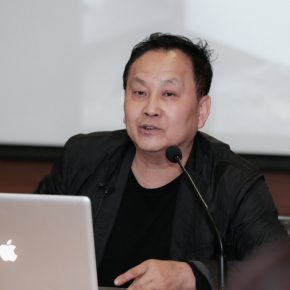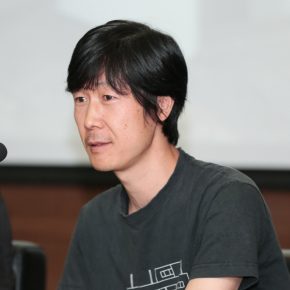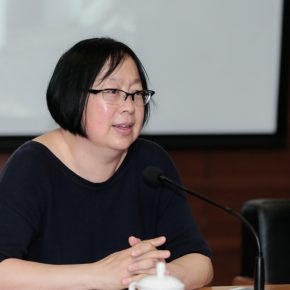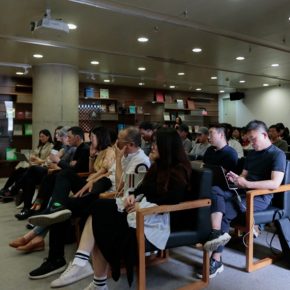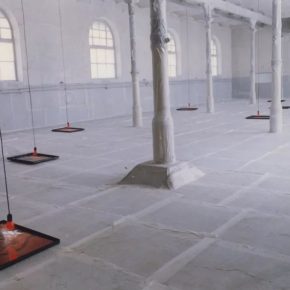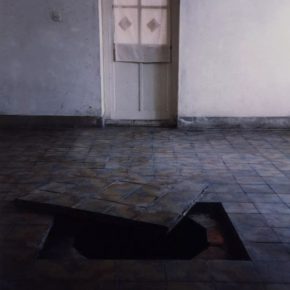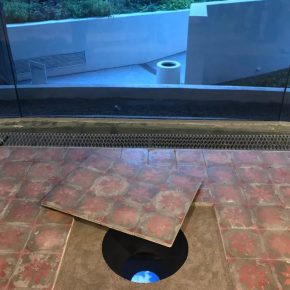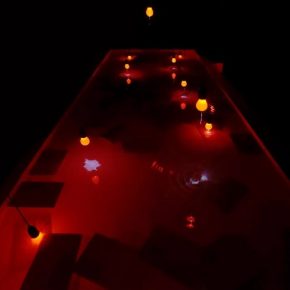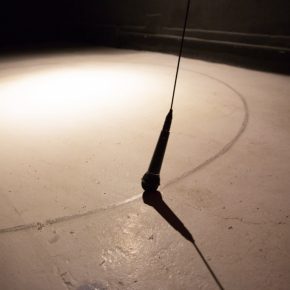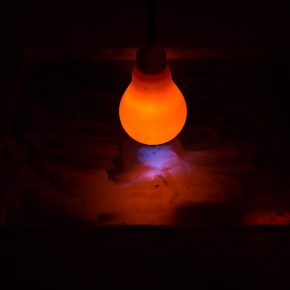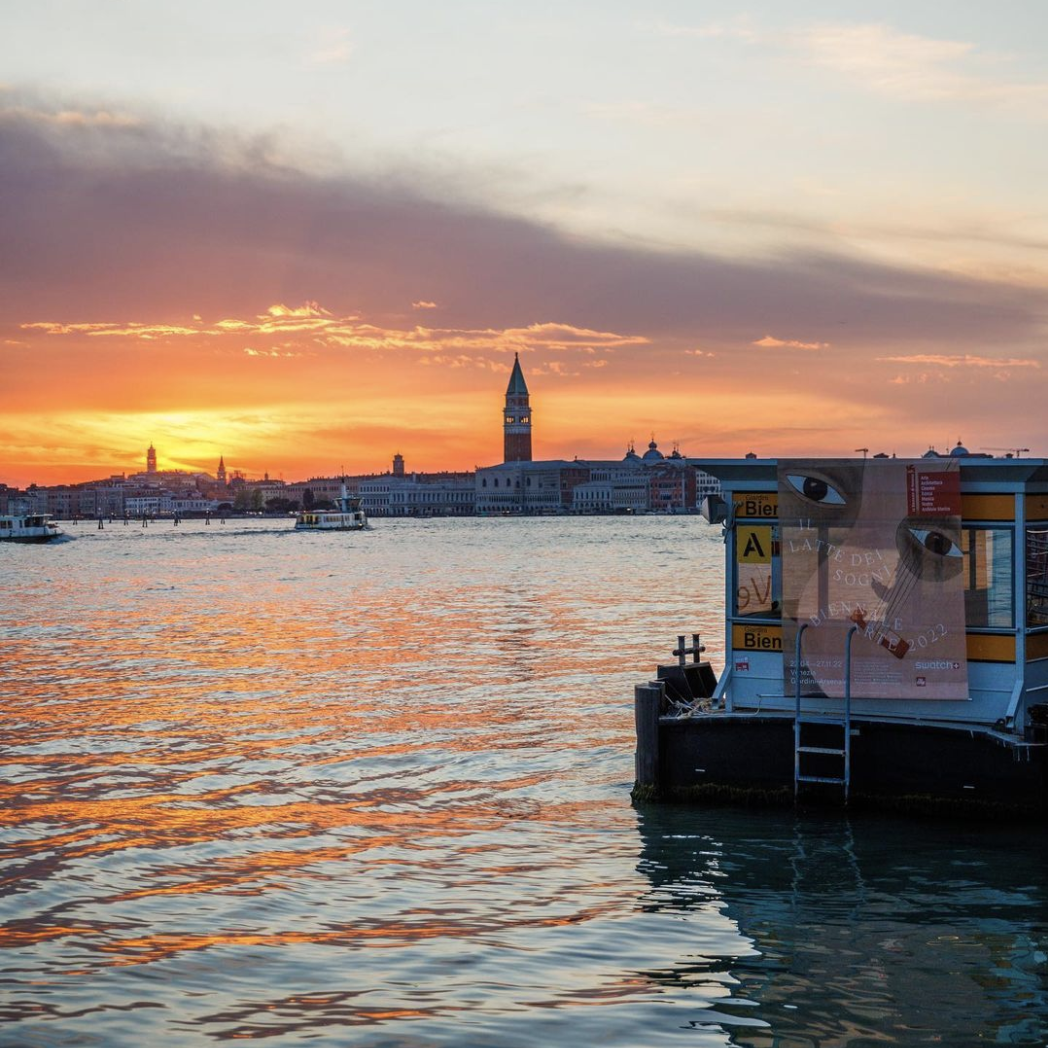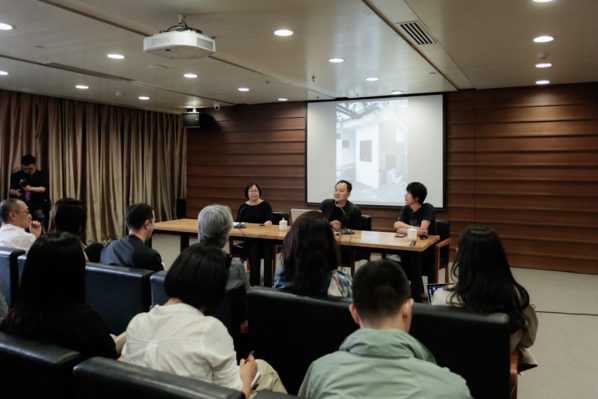
As an important perspective in the study of contemporary art, the notion of “site-specificity” was drawn in artist Wang Gongxin’s solo exhibition in The Bunker, which provides an effective entry to Chinese contemporary art research. Although a “site” as a vital element of an exhibition runs through the development of contemporary art, the “site” has developed its unique quality in the context of globalization, due to the control of politics, economics and other powers stronger than art. Therefore, when “site” as the significant carrier of art, the interpretation of art is embraced by the pluralistic society and positively absorbs cultural collisions from multiple fields. A “site” is both the starting point of human beings and the “hometown” that art can never escape from.
What does the notion of “site-specificity” mean to the practice and interaction between historical writing and Chinese contemporary art? Why do we choose a “site” as the beginning of a conversation? How can Wang Gongxin’s recent solo exhibition in The Bunker be applied to this topic? All these questions have been discussed in this symposium.
In the past forty years, along with the process of close communication and idea-exchange of global art, Chinese contemporary art has gradually cultivated a cultural strategy that elaborates the development of local modernization and a phenomenon that reveals dialectical contradictions of tradition and modernity after it has evolved into the global network. In other words, it is the reason that this complex cultural psychology and the self-regulation of the spiritual construction makes it become increasingly challenging for Chinese art research to define its history and methodology through national identities and cultural boundaries.
On the afternoon of May 14th 2019, the symposium regarding The Bunker series was held in the Auditorium Room of CAFA Art Museum. Artist Wang Gongxin, curator Dong Bingfeng and the founder of The Bunker, Peng Xiaoyang, were invited to attend the symposium. Professor Song Xiaoxia hosted the symposium. Starting from artist Wang Gongxin’s site-specific art creation since the 1990s, the discussion then expanded to the practice and interaction between historical writing and contemporary art.
Mr. Dong Bingfeng briefly introduced The Bunker. The Bunker is a basement located inside the historical site of Duan Qirui government in the Second Ring Road in Beijing. It has held various exhibitions and has been in operation for more than two years. There are four executors, namely, Peng Xiaoyang who is in charge of the space operation, Qin Siyuan who is in charge of exhibitions, Li Yafeng who is responsible for international networking development and Dong Bingfeng who is responsible for academic events related to exhibitions. The aim of The Bunker is to be engaged in the domestic and international art eco-system and to explore art-related issues to raise more academic thoughts, which can be discussed on a broader public platform.
Artist Wang Gongxin has received art education in China and the United States and his art practice and exhibitions have been presented across major art museums worldwide. Starting from Wang’s recent solo exhibition “Under the Shadow – About BIAO” and regarding his series of work that featured “site-specificity” as the background information, he expanded the discussion to experimental thinking of the historical context and social problems of Chinese contemporary art.
Through artworks about the idea of “site-specificity” for around 20 years, Mr. Wang Gongxin has discussed artworks related to different sites. He believes that the site and the location have a close relationship with each other. The location determines a certain angle. Different angles could affect the methods, states and expressions in terms of observing and recognizing things. The site, location and the state of a person could be influenced by the final angle that people choose, and this is a general understanding of “site-specificity”. The exhibition space (i.e. art museums, museums, galleries and art fairs) is a vital component of “site” to display artworks, enabling “site” to be an unavoidable issue for artists at present. Through researching artistic creations related to the notion of “site-specificity”, Wang Gongxin elaborated on the entire process of a work’s production, presentation and final influence.
Dong Bingfeng, a researcher at Intermedia Art Research Center in China Academy of Art, delivered a speech regarding the interactive relationship between the notion of “site” and “place” and historical writing. It responded to Wang Gongxin’s personal artistic practices and the dynamic propositions of the development of Chinese contemporary art, thus deepened the discussion of “how the contemporary could constitute a history? (referencing Huang Zhuan’s words)” Dong Bingfeng said that the proposition of “site-specificity” started from Wang Gongxin’s solo exhibition in The Bunker, which intended to expand an artist’s individual practice to common issues concerned with the public at present (i.e. the discussion in terms of Chinese contemporary art).
Regarding the development of Chinese contemporary art across around 40 years as the starting point, and Wang Gongxin’s solo exhibition as the clue, the speakers in the symposium broadened the discussions about Chinese contemporary art and historical writing related problems. For instance, the symposium on the collection on display China Landscape held in Taikang Space traced from Zhang Peili’s personal artistic practice to the general understanding and research of the development of contemporary art. However, in Wang Gongxin’s art creation, it does not intend to highlight his personal practice; instead, through the site-specific works, Wang integrates his artistic creation with contemporary Chinese society and focuses on the crucial issues which are most concerned by contemporary art.
By conducting a flashback analysis of critic Miwon Kwon’s article, Dong Bingfeng firstly discussed three problems related to “site-specific art creation” and “modernity”. The first one is about “outside space”. An outside space could facilitate the sense of “territory” for a visitor’s experience, which could contribute to a unique identity for an exhibition. Secondly, whether art or anything else is fully occupied by politics, whatever it is. The third is about “site-specific”. Site-specific works focus on the entanglement and inalienable relationship between artworks themselves and the site they are located. Moreover, this kind of work requires spectators to be in a specific site to accomplish the creation.
The following section of the symposium discussed the topics about “how contemporary art could constitute a history?”, “how contemporary could be truthful?” among others proposed by Huang Zhuan. Under the situation of the incomplete systematical institutionalization of Chinese contemporary art in the 1990s and the early 21st century, Huang Zhuan proposed the notions of publicity and public engagement, which has facilitated the development of a contemporary exhibition to a great extent. The reason that contemporary (art) cannot be involved in history lies in its lack of historical accumulation. In this case, we cannot make an accurate historical judgement within such a short period. As the close distance between contemporary history and us, it could be random and subjective to make a selection of historical materials.
Wu Hong has compiled many valuable case studies on different artists, including Xu Bing’s Tobacco Project, Zhang Heng’s studio and Song Dong’s art among others. Huang Zhuan believes that the most significant value for Wu Hong’s research lies in the consistent understanding of artists’ inner logic behind their continuous art creations.
By introducing Okwui Enwezor’s article Exhibition as Place and Site at the beginning, participants in the symposium also discussed the global art and newly established historical narrative that Chinese contemporary art is confronted with at present. Also, starting from the concept of African contemporary art, participants also explored the particular facets of Chinese contemporary art. Furthermore, they expanded the discussion to the relationship between publicity, freedom of contemporary art and the meaning of site-specificity.
Professor Song Xiaoxia concluded that the discussion and she thought that the discussions started from a broad and dynamic cognitive framework, with Miwon Kwon, Huang Zhuan and Okwei Enwezor’s methodologies as the clue, the symposium did not focus on the notion of site-specificity but also involved numbers of core and fundamental issues in terms of contemporary art research. Overall, many topics were discussed in this symposium. Although it is difficult for audiences to digest in such a short period, it allowed audiences to gain an introspection based on their personal cognition and the experiences of contemporary art practice.
The last part of the symposium is the “Q&A” section opened to all audiences.
Text by Lin Lu, translated by Emily Weimeng Zhou and edited by Sue/CAFA ART INFO
Photo by Hu Sichen/CAFA ART INFO


